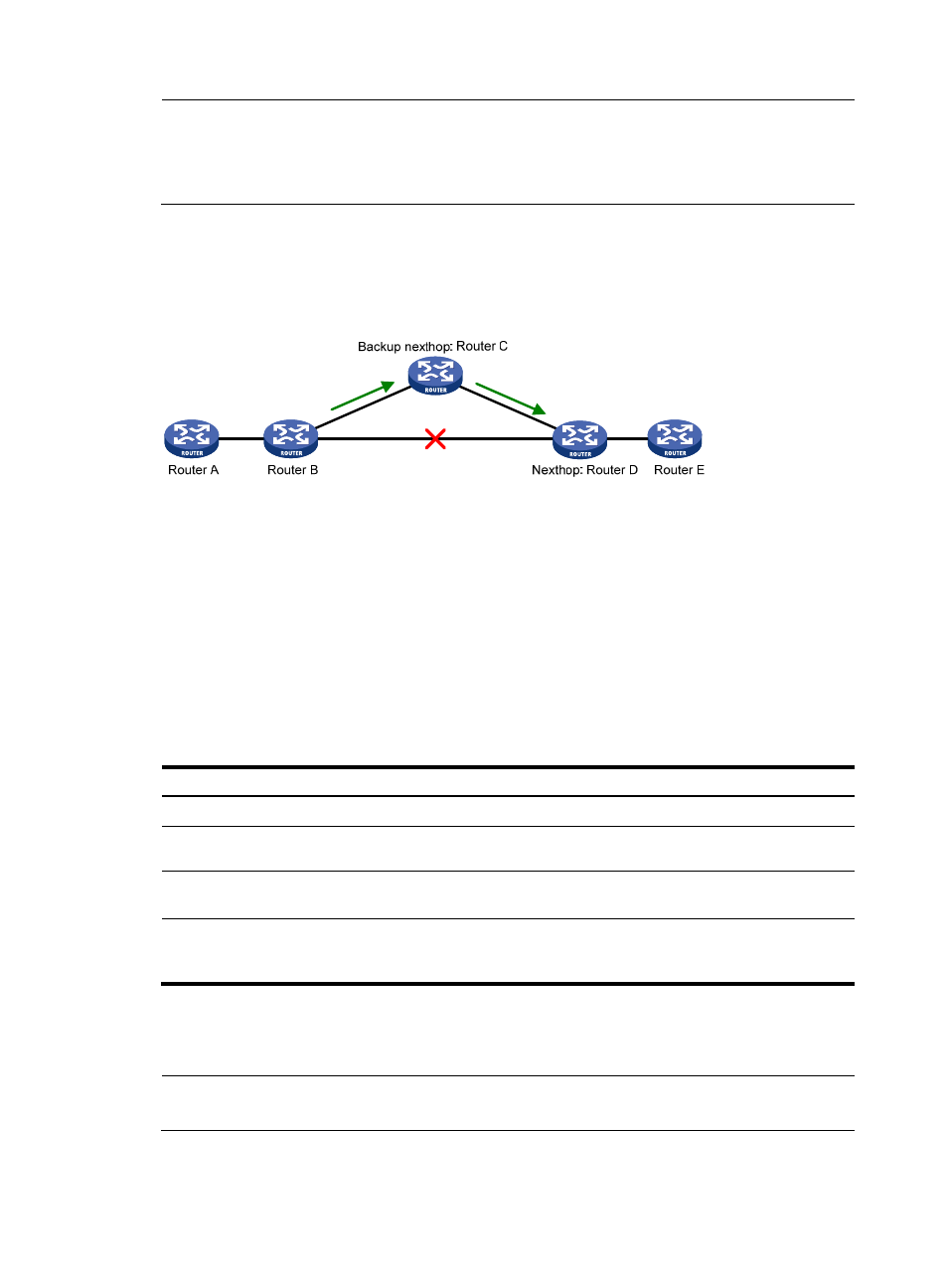Configuration prerequisites, Configuration procedure, Configuring bfd for rip – H3C Technologies H3C SR8800 User Manual
Page 56

40
NOTE:
•
RIP FRR is only effective for non-recursive RIP routes (that are learned from directly connected
neighbors).
•
Do not use RIP FRR and BFD (for RIP) at the same time; otherwise, RIP FRR may fail to take effect.
When a link in a RIP network fails, the traffic is interrupted until RIP completes routing convergence based
on the new network topology.
You can enable RIP fast reroute (FRR) to reduce traffic recovery time.
Figure 9 Network diagram for RIP FRR
, after you enable FRR on Router B, RIP designates a backup next hop using a routing policy
when a network failure is detected. Packets are directed to the backup next hop to reduce traffic recovery
time. At the same time, RIP calculates the shortest path based on the new network topology, and forwards
packets over the path after network convergence.
Configuration prerequisites
You must specify a next hop by using the apply fast-reroute backup-interface command in a routing
policy and reference the routing policy with RIP FRR. For more information about routing policy
configuration, see the chapter “Configuring routing policies.”
Configuration procedure
To configure RIP FRR:
Step Command
Remarks
1.
Enter system view.
system-view
N/A
2.
Configure the source address
of echo packets.
bfd echo-source-ip ip-address
Not configured by default
3.
Enter RIP view.
rip [ process-id ] [ vpn-instance
vpn-instance-name ]
N/A
4.
Enable RIP FRR and reference
a routing policy to designate
a backup next hop.
fast-reroute route-policy
route-policy-name
Disabled by default
Configuring BFD for RIP
NOTE:
For more information about BFD, see
High Availability Configuration Guide.
BFD for RIP provides the following link detection modes:
- H3C SR6600-X H3C SR6600 H3C WX6000 Series Access Controllers H3C WX5000 Series Access Controllers H3C WX3000 Series Unified Switches H3C LSWM1WCM10 Access Controller Module H3C LSWM1WCM20 Access Controller Module H3C LSQM1WCMB0 Access Controller Module H3C LSRM1WCM2A1 Access Controller Module H3C LSBM1WCM2A0 Access Controller Module
